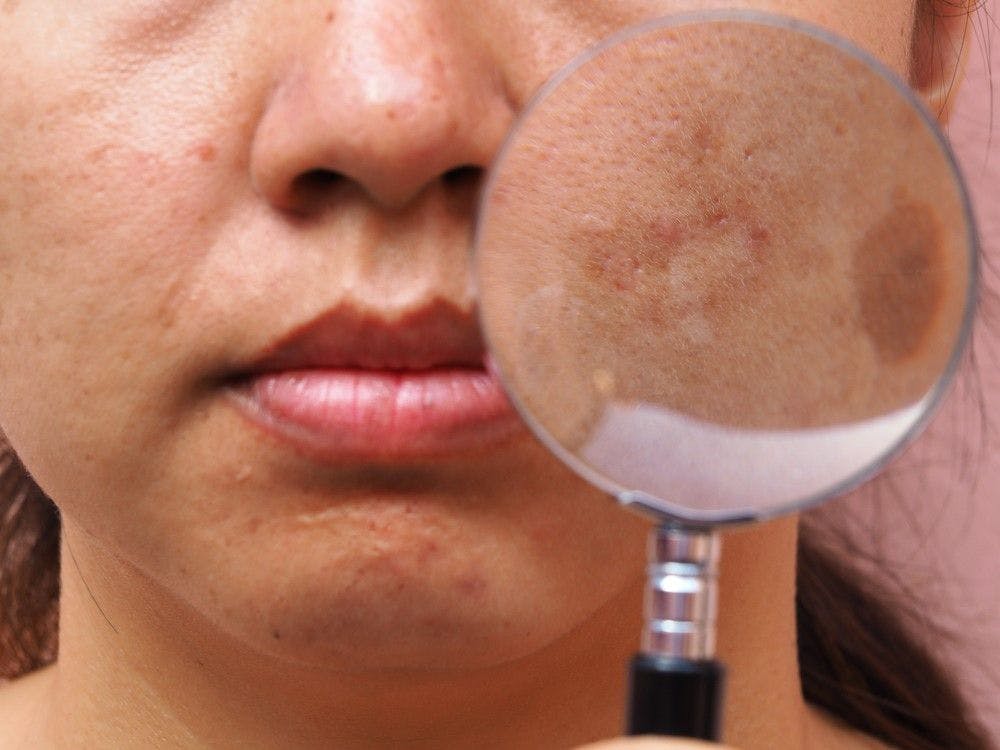- Acne
- Actinic Keratosis
- Aesthetics
- Alopecia
- Atopic Dermatitis
- Buy-and-Bill
- COVID-19
- Case-Based Roundtable
- Chronic Hand Eczema
- Drug Watch
- Eczema
- General Dermatology
- Hidradenitis Suppurativa
- Melasma
- NP and PA
- Pediatric Dermatology
- Pigmentary Disorders
- Practice Management
- Precision Medicine and Biologics
- Prurigo Nodularis
- Psoriasis
- Psoriatic Arthritis
- Rare Disease
- Rosacea
- Skin Cancer
- Vitiligo
- Wound Care
Publication
Article
Dermatology Times
Microneedling improves acne scars, hyperpigmentation in skin of color
Author(s):
A recent small study finds that microneedling can improve acne scarring and the associated hyperpigmentation in patients with skin of color.
Scarring is a common complication of acne, even when the condition is only mild, and in some skin of color patients, the scarring can be complicated by hyperpigmentation. While there are several treatments offered for improving acne scarring, including lasers, dermabrasion, subcision, chemical peels, and microneedling, post acne hyperpigmentation is not often addressed.
A recent small study conducted by researchers at the Jordan University of Science and Technology in Irbid, Jordan found that microneedling can improve acne scarring and the associated hyperpigmentation in skin of color patients.
Microneedling was chosen because it has produced favorable outcomes as a treatment for acne scarring in patients with darker skin. The technique also seems to be associated with fewer complications than other procedures, and pigmentary complications are an important consideration for patients with dark skin, said researcher Firas Al Qarqaz, M.D., of the Department of Dermatology, Jordan University of Science and Technology in Irbid, Jordan.
THE STUDY
The study included 39 patients of skin of color (types 3, 4 and 5) whose acne scars and pigmentation levels were assessed using the post acne hyperpigmentation index (PAHPI) and Goodman-Baron scales (GB scale) before and after treatment by microneedling. Photographs of their scars and pigmentation were also taken.
Topical anesthetic cream (EMLA cream) was applied before the procedures and regional blocks were performed for patients who required additional pain control. Use of creams other than sunblock and moisturisers was barred during the evaluation period following microneedling. Patients who developed new acne lesions were allowed to use benzyl peroxide gel as spot-on treatment but were not allowed to apply it to areas with old acne.
All patients were treated by the same operator using the e Dermastamp device (Dermaroller GmbH) until pinpoint bleeding and uniform erythema of treated skin was obtained. For patients with narrow ice-pick scars, stretching of skin and deep treatment within the scar floor and sides were also performed.
Two weeks later patients were evaluated for postprocedure side effects, including redness, hematomas, dryness, and at least two weeks after that both their scars and pigmentation were evaluated again and patients asked to rate their improvement using the VAS score (0 if improvement less than 25%, mild improvement, 1 if improvement between 25% and 49%, 2 if improvement between 50% and 75%, or 3 if improvement was more than 75%).
THE FINDINGS
The results published in the Journal of Cosmetic Dermatology showed a statistically significant improvement in PAHPI scores (P = .0035) and Goodman-Baron scar scale, (P = 0.008). As expected, all patients experienced transient erythema and dryness following the procedure, but these side-effects disappeared within a few days. None of the patients had paradoxical hyperpigmentation or “tram-track” appearance following microneedling. Most patients (31) felt that they had experienced some improvement as a result of the treatment (scores 1-3).
Dr. Qarqaz said the study showed that microneedling can improve acne scarring and the associated hyperpigmentation and seemed to be safe apart from short-lived erythema and occasional small hematoma following the procedure.
“Some patients will need further treatment for their hyperpigmentation,” he added. “Additional studies focusing on postacne scarring with hyperpigmentation are needed as well as assessment tools designed for this particular patient group.”
Future studies needed to focus on the specific types of scars (eg, deep vs shallow), type of microneedles (stamps vs rollers) and also treatment approach (eg, initial focused treatment for deeper scars followed by full-field treatment), Dr. Qarqaz said. Their study had suggested that the stamp device may be better than conventional/manual microneedling devices as it helped avoid the “tramtrack” appearance that can be associated with use of manual microneedling devices, especially if there is no variation in the direction of roller movements on the skin during treatment, he added.
The current acne scarring scales do not address the pigmentary changes associated with acne whether as post-inflammatory (nonscarring) or as pigmented scarring, which means an important aspect in acne complications, namely pigmented scarring, is overlooked, Dr. Qarqaz said.
“There is a strong need for having a single scale that can be used to evaluate pigmentary scarring in acne patients at various stages of their disease including assessment of treatment response,” he said.
REFERENCES
Harris AG, Naidoo C, Murrell DF. Skin needling as a treatment for acne scarring: an up-to-date review of the literature. Int J Women’s Dermatol. 2015;1:77-81.
Al Qarqaz F, Al-Yousef A. Skin microneedling for acne scars associated with pigmentation in patients with dark skin. J Cosmet Dermatol. 2018;00:1–6. https://doi.org/10.1111/jocd.12520

Newsletter
Like what you’re reading? Subscribe to Dermatology Times for weekly updates on therapies, innovations, and real-world practice tips.















